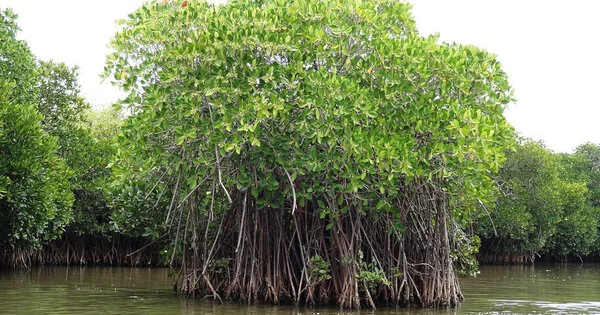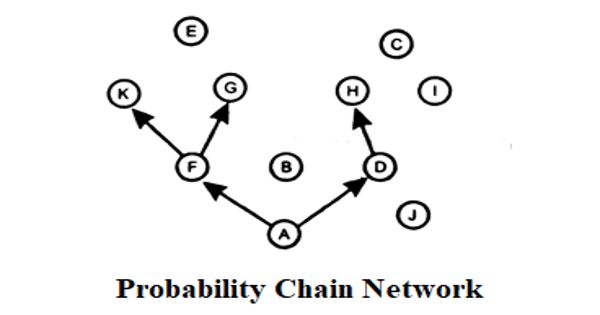Mangrove forests or swamps can be found all over the world on low, muddy tropical coastal areas. Mangroves are woody plants that make up the majority of the vegetation in mangrove forests. They are distinguished by their prop roots, their ability to withstand regular salt water inundation, and their seed germination and seedling development. Although not closely related, woody plants with these adaptations are all called mangroves; the mangroves below belong to the Rhizophoraceae, Meliaceae, and Verbenaceae families.
Along the banks of estuarine rivers, mangrove forests grow. They form dense thickets of prop roots and aerial stems, trapping sediments and pushing the shallow mud flats and delta areas seaward. Excursions into mangroves are difficult due to the mud, stems, and roots, making it a true biological adventure.
The glossy leaves and branching roots of mangroves are stunning, and a new study finds that the moon plays an important role in the health of these trees. Long-term tidal cycles caused by the moon drive the expansion and contraction of mangrove forests in Australia, according to a study published in Science Advances on September 16. This discovery is critical for predicting when mangrove stands, which are good at sequestering carbon and may help combat climate change, are most likely to proliferate. Such knowledge could help to protect and restore forests.
Mangroves are coastal trees that provide habitat for fish as well as protection from erosion. However, in some areas, the forests are threatened by a variety of factors, including coastal development, pollution, and land clearing for agriculture.
Mangroves are coastal trees that provide habitat for fish as well as protection from erosion. However, in some areas, the forests are threatened by a variety of factors, including coastal development, pollution, and land clearing for agriculture. Neil Saintilan, an environmental scientist at Macquarie University in Sydney, and his colleagues used satellite imagery to get a bird’s-eye view of these forests. The researchers calculated how the size and density of mangrove forests in Australia changed over time using NASA and US Geological Survey Landsat data from 1987 to 2020.
After accounting for persistent increases in these trees’ growth, which were most likely caused by rising carbon dioxide levels, rising sea levels, and rising air temperatures, Saintilan, and his colleagues discovered an unusual pattern. Mangrove forests had a predictable expansion and contraction in both extent and canopy cover. “I noticed this 18-year oscillation,” Saintilan explains.

The researchers were inspired by the moon’s regularity. Earth’s nearest celestial neighbor has long been known to aid in the movement of tides, which deliver water and nutrients to mangroves. The team hypothesized that a rhythm known as the lunar nodal cycle could explain the mangroves’ growth pattern.
Over the course of 18.6 years, the plane of the moon’s orbit around Earth slowly tips. When the moon’s orbit is the least tilted relative to our planet’s equator, semidiurnal tides — which consist of two high and two low tides each day — tend to have a larger range. That means that in areas that experience semidiurnal tides, higher high tides and lower low tides are generally more likely. The effect is caused by the angle at which the moon tugs gravitationally on the Earth.
Saintilan and his colleagues found that mangrove forests experiencing semidiurnal tides tended to be larger and denser precisely when higher high tides were expected based on the moon’s orbit. The effect even seemed to outweigh other climatic drivers of mangrove growth, such as El Niño conditions. Other regions with mangroves, such as Vietnam and Indonesia, probably experience the same long-term trends, the team suggests.
Saintilan credits his discovery to having access to data dating back decades. “Some of these longer-term drivers of vegetation dynamics have never really been identified before.” This effect on mangrove populations must be recognized, according to Octavio Aburto-Oropeza, a marine ecologist at the Scripps Institution of Oceanography in La Jolla, Calif., who was not involved in the study.
Scientists now know when certain mangroves are most likely to thrive and should make extra efforts to encourage the growth of these carbon-sequestering trees, according to Aburto-Oropeza. That could appear as additional restrictions on nearby human activity that could harm the forests, he says. “We need to be more proactive.”
















